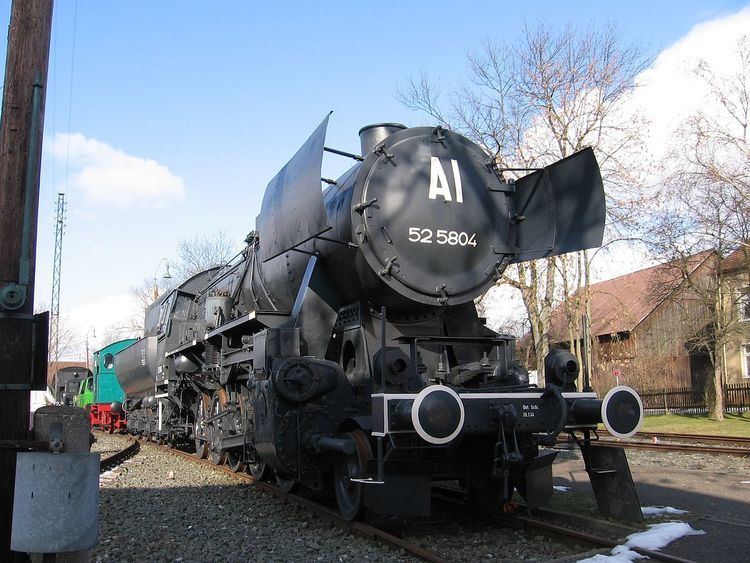 | ||
Kriegslokomotiven (German: for "war locomotives", singular: Kriegslokomotive) or Kriegsloks were locomotives produced in large numbers during the Second World War under Nazi Germany. Their construction was tailored to the economic circumstances of wartime Germany along with conquered and occupied territories across Europe, taking account of the shortage of materials, the transportation of goods in support of military logistics, ease of maintenance under difficult conditions, resistance to extreme weather, limited life and the need for rapid, cheap, mass production. In order to meet these requirements, economic drawbacks such as relatively high fuel consumption had to be accepted. Forced labour was used in the construction of some of the locomotives; German locomotive building firms employed prisoners from concentration camps and foreign, mostly Polish, workers. Kriegsloks were also used to haul Holocaust trains.
Contents
Construction
The war locomotives (or Kriegslokomotiven) were kept technically as simple as possible and the use of scarce materials (particularly copper) was dropped. Several German firms used prisoners from concentration camps as forced labour in the production of Kriegslokomotiven. Borsig Lokomotiv Werke (AEG) used forced labour from KL Auschwitz, Schichau-Werke used forced labor from KZ Stutthof, and its subcamps. DWM Posen (Deutsche Waffen- und Munitionsfabriken Posen) took over Polish manufacturer H. Cegielski – Poznań and turned its workforce into forced labour. Oberschlesische Lokfabrik Krenau took over Polish manufacturer Fablok and used forced labour under threat of death. Identical engines were produced in Vienna, Kassel, Berlin, Munich, Stuttgart, Kirchen, Plzeň (Pilsen), and Strasbourg.
The manufacture of electric locomotives as Kriegslokomotiven was a special case, because they could only be used in the core network where there was the working infrastructure able to supply the current: power stations, overhead transmission lines, electricity substations and catenary. As a rule, locomotives were preferred that were dependent on additional infrastructure as little as possible. German electric locomotives were given aluminium windings in the traction motors and transformers, and the steam engines had steel fireboxes, hence the name Heimstofflok or 'home-grown loco'.
Classes
A Kriegslokomotive usually had two classifications: one based on the normal peacetime classification system and a separate wartime classification. For example, a wartime steam locomotive or Kriegsdampflokomotive (KDL) was given a KDL class as well as its DRG (Deutsche Reichsbahn) class. Likewise a wartime motorised locomotive or Kriegsmotorlokomotive had a KML class number and a wartime electric locomotive or Kriegselektrolokomotive would have a KEL class number. Besides the DRG, the German Armed Forces had their own locomotive classes. A field railway locomotive belonging to the Army were known as a Heeresfeldbahnlokomotive or HF. Standard gauge engines for the Wehrmacht, mostly diesel switchers, were designated "Wehrmacht Standard Gauge Locomotive" (Wehrmachtslokomotive für Regelspur) or WR.
The following classes of Kriegslokomotive were procured by the Deutsche Reichsbahn and other customers (industrial and military railways) during the Second World War:
